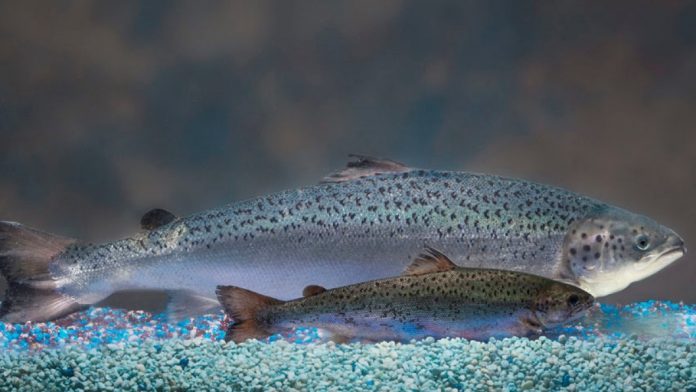Legal challenge questioned FDA’s authority.
The US Food and Drug Administration can regulate salmon that’s genetically engineered to grow faster, according to a December ruling.
AquaBounty derives genetic material from a Pacific Chinook salmon and from ocean pout which is then constructed into the genome of an Atlantic salmon to produce a line of fish that grow to full size in roughly half the standard time.
The FDA was issued with a lawsuit by Earthjustice representing the Institute for Fisheries Resources and other groups. The Justice Department represented the FDA.
- Read more: GM salmon singled out in new US bill
“The lawsuit is both a broadside attack on the FDA’s authority to regulate the genetic engineering of animals and a targeted attack on the particular process by which the agency approved the salmon,” U.S. District Judge Vince Chhabria of the Northern District of California stated in the 23-page ruling.
“The plaintiffs’ broadside attack has a head-scratching element to it,” Judge Chhabria wrote. “Although they insist the FDA lacks the authority to regulate the genetic engineering of animals, the plaintiffs have not explained how this conduct can otherwise be regulated under current law.”
“Under the plain language of the Food, Drug, and Cosmetic Act, the FDA has the authority to require companies to seek its approval before creating and breeding genetically engineered animals,” Judge Chhabria wrote. “Perhaps the genetic material used to modify an animal does not seem like a ‘drug’ in the colloquial sense, but it is the statutory definition that matters.”
A hearing will take place in May 2020 on the second round, which involves the question whether the agency’s approval of the genetically engineered salmon was faulty, even if its general assertion of jurisdiction over genetic engineering is lawful.
The first harvest of the land-based GE AquAdvantage Salmon is expected in the fourth quarter of 2020.

